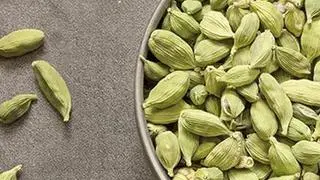American farmers, among Donald Trump’s most loyal supporters, face mounting financial pain from the president’s trade war with China and the growing risk that the damage will outlast the conflict.
The stand-off with China over trade is compounding the strain of five years of falling commodity prices and losses from spring flooding. And as the dispute drags on, China is forging relationships with competing suppliers and farmers in other countries are reorienting operations to cater to the Chinese markets.
Among the hardest hit and most vulnerable to continuing tensions are soyabean growers across the US grain belt. Soyabean futures on Monday skidded to their lowest prices in more than a decade and are down more than 20% from a year ago.
Some agricultural leaders harshly criticised the latest escalation, though farm groups mostly have been wary of blaming Trump directly because of his popularity in rural America. “Washington, DC, has made another miscalculation, and the livelihoods of farmers and the communities they support is threatened,” Lynn Rohrscheib, president of the Illinois Soyabean Growers, which represents 43,000 farmers in the State, said in a statement on Monday. “Illinois soybean producers face greater challenges each day without a deal. We see no end in sight.”
The sense of peril was evident in the president’s announcement on Friday in tandem with new tariffs on China of an ill-defined plan to help farmers with $15 billion in assistance that would come on top of the $12 billion in aid announced last year. Agriculture Secretary Sonny Perdue said he is working on a plan and will submit it to the president within “a few days to a couple of weeks.”
Feeling the Pinch
Senator Joni Ernst of Iowa said that farmers in her state “strongly believe that China should be held accountable, but they are also feeling the pinch and need to see that market back open for trade.”
Farmers aren’t likely to turn wholesale against Trump any time soon. “There could be some erosion of Trump’s support in the rural base of the electorate,” but for the most part they will “stick with Trump,” said Mack Shelley, a political science professor at Iowa State University.
The trade war is already reverberating through American agriculture, as farm exports to China plunged from $19.6 billion in 2017 to $9.2 billion last year. Overall, US farm income dropped 16% last year to $63 billion, about half the level it was as recently as 2013. The rainy spring this year makes things worse. Midwestern farmers choose between planting corn or soyabeans but corn requires earlier planting. But the window for corn is running out as farmers wait for fields to dry.
Farmer bankruptcies in six Midwest States rose to 30% in 2018, according to the Federal Reserve Bank of Minneapolis. A report by First Midwest Bank in Chicago showed past-due agricultural loans up 287% in 2018 over the previous year. Jonathan Coppess, a University of Illinois professor of agricultural policy and former head of the US Farm Service Agency, said that US farmers’ overseas competitors will gain more advantage as the dispute persists.
“There’s ripple effects. That then changes farmer behaviour in different countries,” Coppess said. “Overall you could have more soyabean acres. That then creates more soyabean production worldwide. You don’t just turn it off.”
Brazil is now poised to overtake the US as the world’s biggest soyabean grower in the 2019-20 growing season, only the second time it has done so, according to a US Agriculture Department forecast released on Friday. The South American nation is expanding farmland devoted to soyabeans, which can mean cutting down forests, to meet higher demand from China amid the tariffs on US crops, Hubertus Muehlhaeuser, CEO, CNH Industrial NV, a global agricultural equipment manufacturer, said in an interview last week.







Comments
Comments have to be in English, and in full sentences. They cannot be abusive or personal. Please abide by our community guidelines for posting your comments.
We have migrated to a new commenting platform. If you are already a registered user of TheHindu Businessline and logged in, you may continue to engage with our articles. If you do not have an account please register and login to post comments. Users can access their older comments by logging into their accounts on Vuukle.